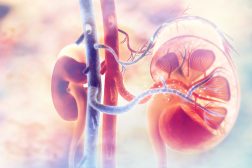Definition
noun, plural: crocodiles
Any of the amphibious reptile species of the subfamily Crocodylinae
Supplement
The crocodiles are species belonging to the subfamily Crocodylinae. They are amphibious reptiles and as such can be found on land and aquatic habitats. They are semiaquatic retiles and are usually found in freshwater habitats such as rivers, wetlands, and lakes. There is a species of crocodile that is adapted to a marine environment. In particular, Crocodylus porosus may be found in marine habitats but often resides in brackish waters such as mangrove swamps, estuaries, lagoons, and deltas. The crocodiles are found throughout the tropics in Australia, America, Africa, and Asia.
The true crocodiles are large, lizard-like reptiles. The eyes, ears, and nostrils are at the top of their head. They have thick scaly skins. Their scales though are not overlapping. Their teeth are conical and resembling a peg. They are carnivorous, feeding on the meat of mammals, birds, fish, etc. They are ectotherms.
Closely related species of crocodiles are alligators, caimans, and gharials. However, they are not regarded as true crocodiles. They, together with the true crocodiles, make up the order Crocodylia or the crocodilians. An obvious morphological distinction of crocodiles that make them identifiable from alligators and caimans is having a V-shaped snout. Another distinctive morphological feature is having a large fourth tooth in the lower jaw that fits into a constriction in the upper jaw when the mouth is closed.
Word origin: from Latin crocodilus, from Ancient Greek krokódeilos
Scientific classification:
- Kingdom: Animalia
- Phylum: Chordata
- Class: Reptilia
- Superorder: Crocodylomorpha
- Order: Crocodilia
- Family: Crocodylidae
- Subfamily: Crocodylinae Cuvier, 1807
Scientific name:
See also:
- alligator
- caiman
- gharial
- crocodilian
Related term(s):







